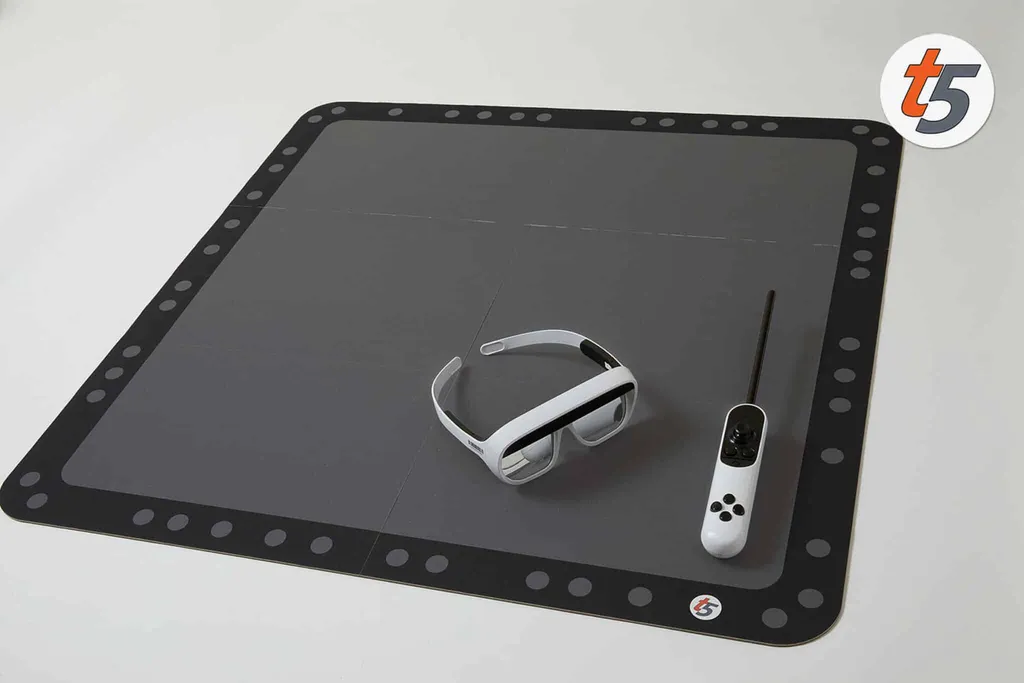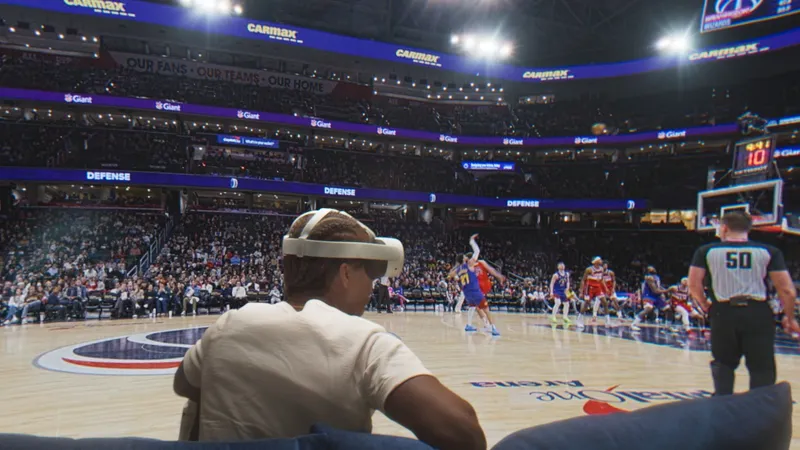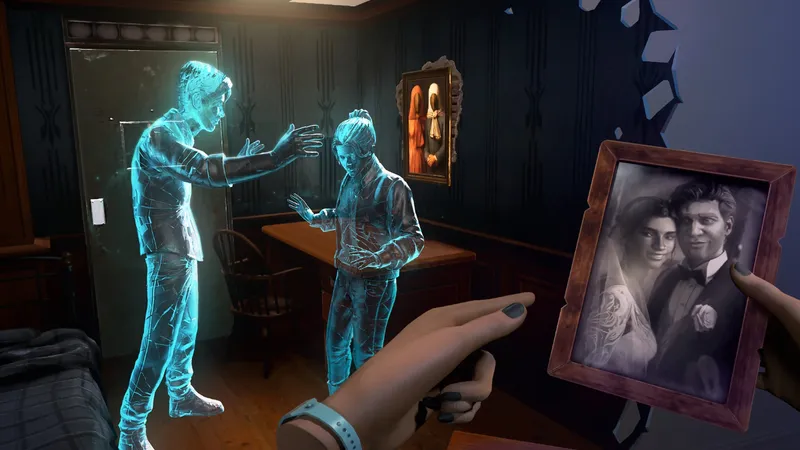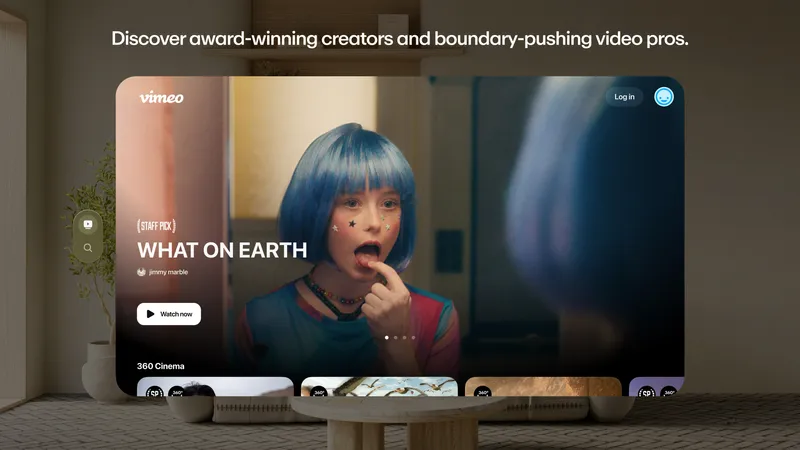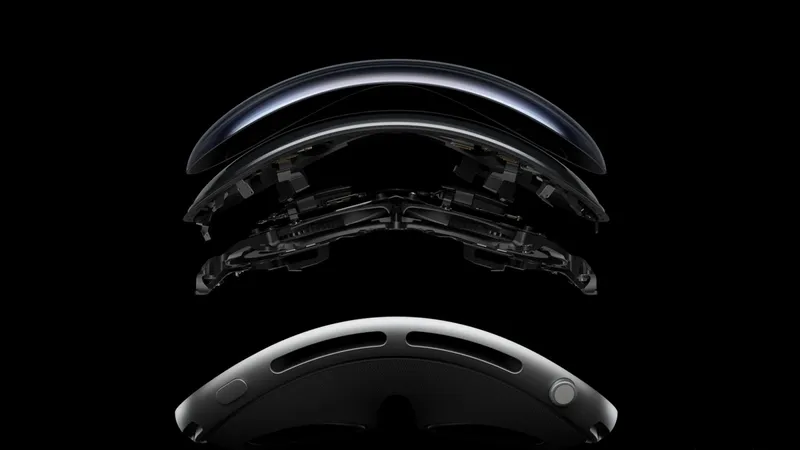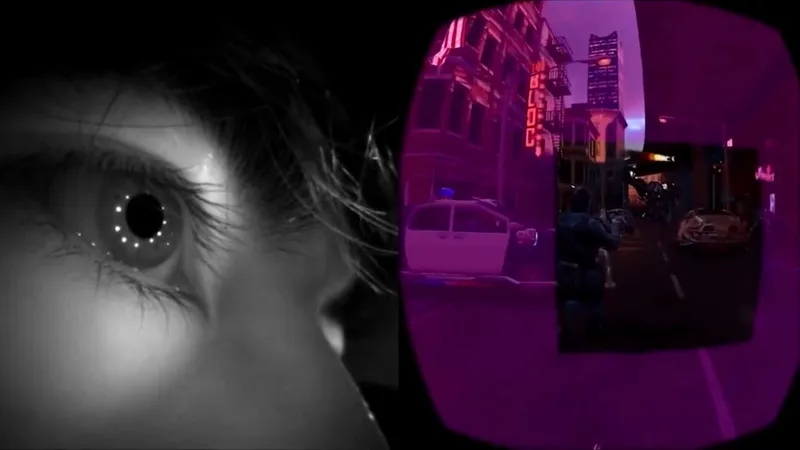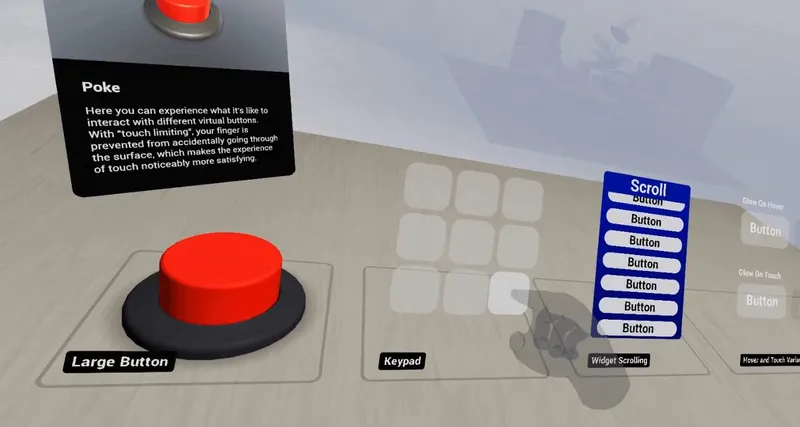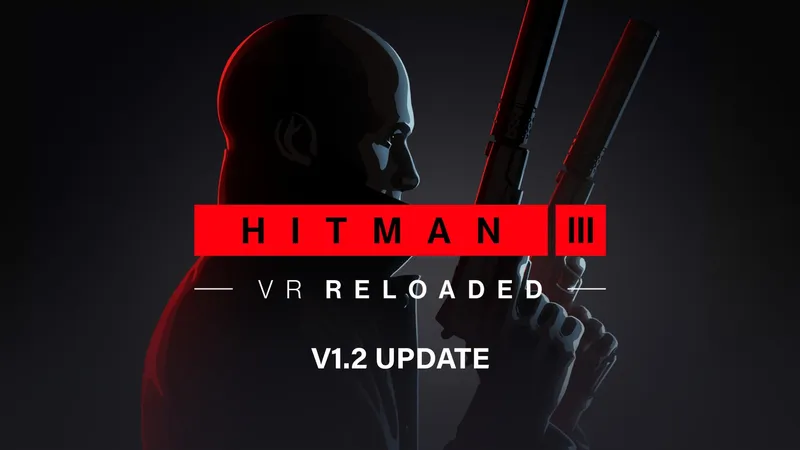If AR & VR glasses are on parallel paths for the foreseeable future, as Meta’s top researcher Michael Abrash recently suggested, when will we see the first hit consumer AR product?
Exactly when will an AR headset sell millions of units and achieve a self-sustaining cycle of developer success which drives new content to its platform? And can Tilt Five get there first?
In Las Vegas last week Jeri Ellsworth carried the consumer packaging for Tilt Five’s AR glasses. A two-person set starts around $660 on Tilt Five’s website, with shipping listed at least 4 weeks out as of this writing.
The Tilt Five CEO pulled two pairs of glasses from their compartments in the box and plugged them into her laptop. I put on the white frames, she put on the other pair and rolled out a fan-made retroreflective mat instead of the standard game board from the box. Creatures and cards sprang to life on the mat in front of me as we played a series of games she launched from her laptop.
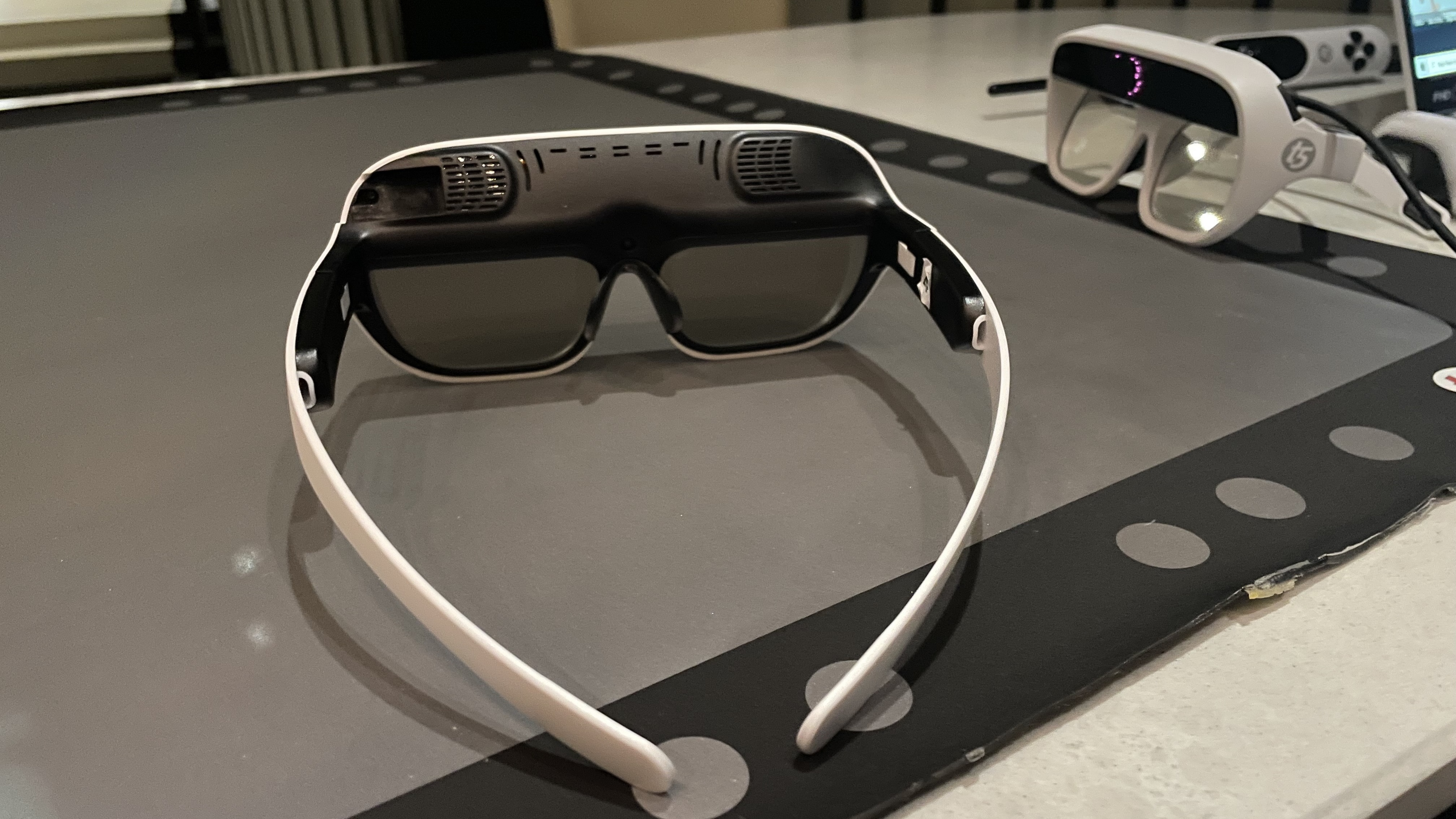
Each player could see different scenes if the developer wants, she said, which is ideal for keeping secrets in many physical board games, card games, and video games. Other implementations, meanwhile, might deploy a dynamic fog of war. For example, a real-time strategy game like Command & Conquer might feel amazing on the hardware.
“If there needs to be private information in a traditional videogame I can’t keep it private from people playing on the same couch with me,” Ellsworth said. “It’s difficult, that’s why you don’t see split screen in too many video games, it’s too much friction.”
Tilt Five also supports a synchronous view as well which is ideal for learning the rules of a game or spectating. To teach me the rules of an upcoming game, Ellsworth pointed to characters and cards in front of me. Her hand casually occluded virtual objects like the pay-off to a magic trick a decade in the making.
“I’m super proud of it,” she said. “We’ve all done the VR experiences where we’re yelling at someone from outside trying to onboard them. If you can’t onboard people quickly you can’t have a mass market product.”
Sometimes I wonder what the path to consumer VR would have looked like if Palmer Luckey & Brendan Iribe hadn’t sold Oculus to Facebook. What if Oculus hadn’t hired researchers like Abrash from Valve? Would consumer VR still be a thing and, if so, at what scale? Meta’s executive adviser John Carmack just exited Mark Zuckerberg’s effort after the CEO invested tens of billions of dollars in VR, writing in his departure note “it all could have happened a bit faster.” Does “bit” understate or overstate how much faster things could have gone? And if you stack the billions spent there against Sony, Microsoft, Magic Leap, Google, Apple and others, are all these executives investing too much on AR & VR, or too little? Getting the year wrong when an AR headset is compelling enough to be worn by millions could mean dropping into obscurity. Get it right, though, and you might play a key part in defining the 21st century.
The above is meant to contextualize two things. First, that Ellsworth’s journey from Valve to CastAR to Tilt Five developing supremely lightweight wide field of view AR glasses ran parallel to the Oculus VR story over the same period. Second, that Ellsworth tells me her dream would see Tilt Five become the “Nintendo of AR.”
Yup. Got fired today. Time for new exciting projects.
— Jeri Ellsworth 🐀 (@jeriellsworth) February 13, 2013
“The timing is likely right for us because all the cards have been on the table for quite some time for folks working in XR. In castAR, the early days, even at Valve, everybody was way too optimistic,” Ellsworth said. “Now we’re a decade in and, no, these problems are difficult. This concept I came up with a decade ago — the timing is right. Someday there’s going to be solutions for this, but near term no one is going to come up with a field of view as wide as ours, or have occlusion as perfect as ours.”
Tilt Five is a long way from becoming the Nintendo of AR, but it did just fulfill its Kickstarter promises for an AR headset featuring a breakthrough field of view amid an unprecedented global pandemic. Last year, Ellsworth told us they were working on running multiple pairs of glasses from a single PC and this year she showed exactly that in a solid demonstration of incremental progress. Next? Must-have games (Catan is confirmed) and Android support.
“There’s more we’re not talking about,” Ellsworth teased. “There’s multiple paths we can go over the next several decades. Our goal is to become a multi-billion dollar company, why do it otherwise?”
How exactly Tilt Five becomes the Nintendo of AR isn’t exactly clear – it’ll help if they can get amazing titles like Resolution Games’ Demeo on the system. Still, recent demos at Gamescom and now at CES suggest there’s enough of a consumer package coming together here for developers and enthusiasts to keep an interest heading into 2024.
“You have to recognize where there are barriers you can’t solve quickly,” Ellsworth said. ” Super wide field of view and you can wear it anywhere in the world — that’s my goal too. But it’s not possible right now and the end user doesn’t care, they just want to be delighted. That’s my job.”
“If someone takes a chance on us in the investment world,” Ellsworth told me. “I think we’ve got this.”

